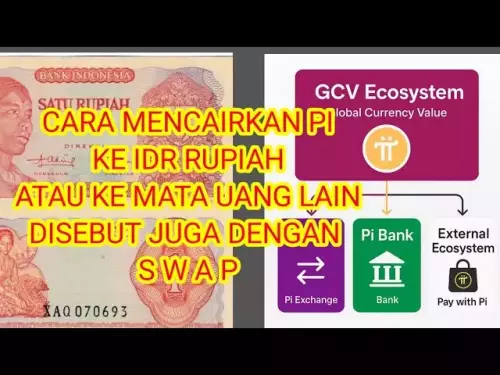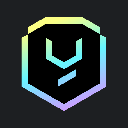-
 bitcoin
bitcoin $112715.707551 USD
-1.71% -
 ethereum
ethereum $4101.475385 USD
-3.01% -
 tether
tether $1.000644 USD
-0.02% -
 bnb
bnb $1207.619465 USD
-6.77% -
 xrp
xrp $2.501451 USD
-3.98% -
 solana
solana $202.947124 USD
-3.32% -
 usd-coin
usd-coin $1.000295 USD
0.04% -
 dogecoin
dogecoin $0.203884 USD
-4.47% -
 tron
tron $0.317154 USD
-1.72% -
 cardano
cardano $0.695009 USD
-4.43% -
 hyperliquid
hyperliquid $38.853961 USD
-8.23% -
 chainlink
chainlink $18.988674 USD
-4.64% -
 ethena-usde
ethena-usde $1.000233 USD
-0.03% -
 stellar
stellar $0.337050 USD
-3.63% -
 bitcoin-cash
bitcoin-cash $536.861728 USD
-1.28%
How to get out of a MOVE trap? How to choose between covering a position and cutting losses?
In crypto trading, a MOVE trap occurs when the market moves against your position; to manage it, identify it early and decide between covering or cutting losses based on analysis and risk tolerance.
May 10, 2025 at 05:07 am

In the cryptocurrency market, traders often find themselves in a MOVE trap, a situation where the market moves against their position, leading to significant losses. Understanding how to navigate out of such traps is crucial for any trader. This article will delve into the strategies for exiting a MOVE trap and the decision-making process between covering a position and cutting losses.
Understanding a MOVE Trap
A MOVE trap in the cryptocurrency market occurs when a trader's position moves in the opposite direction of their expectation, causing the trade to go against them. This can happen due to various factors such as unexpected news, market manipulation, or simply a misjudgment of market trends. The key to managing a MOVE trap is to recognize it early and take appropriate action.
Identifying a MOVE Trap
To effectively get out of a MOVE trap, the first step is to identify that you are in one. Look for signs such as a rapid decline in the value of your position, a sudden shift in market sentiment, or a breach of your predetermined stop-loss levels. These indicators suggest that the market is moving against your trade, and it is time to reassess your strategy.
Strategies for Exiting a MOVE Trap
Once you have identified that you are in a MOVE trap, you need to decide on the best course of action to minimize your losses. There are two primary strategies: covering your position or cutting your losses.
Covering Your Position
Covering your position involves taking an opposite trade to offset your current losing position. This strategy can be beneficial if you believe the market will eventually revert to your original prediction. For example, if you are long on Bitcoin and the price drops significantly, you can take a short position to cover your losses until the market rebounds.
- Assess the Market: Before covering your position, analyze the current market conditions to determine if a reversal is likely.
- Calculate the Offset: Determine the size of the offsetting position needed to cover your losses.
- Execute the Trade: Place the offsetting trade carefully, ensuring it aligns with your risk management strategy.
Cutting Your Losses
Cutting your losses involves exiting your current position entirely to prevent further loss. This strategy is suitable when you believe the market will continue to move against you. For instance, if you are short on Ethereum and the price starts to rise rapidly, it might be wise to exit the trade to avoid deeper losses.
- Set a Stop-Loss: Always have a stop-loss order in place to automatically exit a trade if it reaches a certain loss threshold.
- Monitor the Market: Keep a close eye on market trends and news that could affect your position.
- Exit the Trade: When your stop-loss is triggered or you see further adverse movement, exit the trade promptly.
Choosing Between Covering a Position and Cutting Losses
The decision between covering a position and cutting losses depends on several factors, including your risk tolerance, market analysis, and the specific circumstances of your trade.
Risk Tolerance
Your risk tolerance plays a significant role in deciding whether to cover a position or cut losses. If you have a higher risk tolerance, you might be more inclined to cover your position and wait for a market reversal. Conversely, if you prefer to minimize risk, cutting your losses might be the safer option.
Market Analysis
Conducting a thorough market analysis is crucial in making an informed decision. Look at technical indicators, market sentiment, and any upcoming events that could influence the market. If your analysis suggests a potential reversal, covering your position might be the better choice. However, if the market shows no signs of turning around, cutting your losses is likely the wiser move.
Specific Circumstances
The specific circumstances of your trade, such as the size of your position and the amount of loss you have already incurred, also influence your decision. If your position is small and the loss is manageable, you might opt to cover it. On the other hand, if the loss is significant and could impact your overall trading capital, cutting your losses might be necessary to preserve your funds.
Implementing Your Chosen Strategy
Once you have decided whether to cover your position or cut your losses, it is essential to implement your strategy effectively.
Covering Your Position
If you choose to cover your position, follow these steps:
- Review Your Analysis: Double-check your market analysis to ensure that covering your position is still the best course of action.
- Determine the Size of the Offset: Calculate the exact size of the offsetting trade needed to cover your losses.
- Place the Trade: Execute the offsetting trade, ensuring it aligns with your overall trading strategy and risk management rules.
Cutting Your Losses
If you decide to cut your losses, follow these steps:
- Review Your Stop-Loss: Ensure your stop-loss order is still appropriate given the current market conditions.
- Monitor the Market: Keep a close eye on the market to see if any new developments could affect your decision.
- Exit the Trade: When your stop-loss is triggered or you see further adverse movement, exit the trade promptly to minimize your losses.
FAQs
Q: Can I use both strategies simultaneously to manage a MOVE trap?A: While it is possible to use both strategies, it can be complex and risky. Covering your position while also cutting losses might lead to over-trading and increased transaction costs. It is generally better to choose one strategy based on your analysis and risk tolerance.
Q: How can I prevent falling into a MOVE trap in the future?A: To prevent falling into a MOVE trap, always conduct thorough market research, set realistic expectations, and use stop-loss orders to manage risk. Additionally, staying informed about market news and trends can help you anticipate potential adverse movements.
Q: What role does emotional discipline play in managing a MOVE trap?A: Emotional discipline is crucial in managing a MOVE trap. Avoid making impulsive decisions based on fear or greed. Stick to your trading plan and rely on your analysis rather than emotions to guide your actions.
Q: Are there any tools or indicators that can help me identify a MOVE trap early?A: Yes, several tools and indicators can help you identify a MOVE trap early. Technical indicators such as moving averages, RSI, and Bollinger Bands can signal potential reversals or adverse movements. Additionally, using real-time market data and news feeds can keep you informed about sudden shifts in market sentiment.
Disclaimer:info@kdj.com
The information provided is not trading advice. kdj.com does not assume any responsibility for any investments made based on the information provided in this article. Cryptocurrencies are highly volatile and it is highly recommended that you invest with caution after thorough research!
If you believe that the content used on this website infringes your copyright, please contact us immediately (info@kdj.com) and we will delete it promptly.
- Zero Knowledge Proof, Whitelist, Blockchain 2025: The Dawn of Private, Scalable Infrastructure
- 2025-10-16 01:20:01
- Altcoins, Whales, and Tariff Threats: Navigating the Crypto Seas
- 2025-10-16 01:20:01
- ChatGPT's Crystal Ball: HBAR Price Prediction and the Rise of Snorter in 2025
- 2025-10-16 01:20:01
- ZEROBASE Listing and Airdrop: A New Era for ZK Tech?
- 2025-10-16 00:25:13
- Digital Euro, Gold Standard, and Active Reserves: A New York Minute on the Future of Money
- 2025-10-16 00:25:13
- TCG OTS Pack Spoilers: What's Hot and What's Not?
- 2025-10-16 00:33:47
Related knowledge

Practical parameter settings for a Bitcoin multi-timeframe moving average system
Sep 18,2025 at 10:54pm
Optimizing Timeframe Combinations for Bitcoin Trading1. Selecting appropriate timeframes is crucial when building a multi-timeframe moving average sys...

How can I filter out false breakouts in Dogecoin high-frequency trading?
Sep 22,2025 at 01:00am
Understanding False Breakouts in Dogecoin Trading1. A false breakout occurs when Dogecoin's price appears to move beyond a defined support or resistan...

Techniques for identifying tops and bottoms in the Bitcoin on-chain NVT model
Sep 20,2025 at 07:54pm
Understanding the NVT Model in Bitcoin Analysis1. The Network Value to Transactions (NVT) ratio is often described as the 'P/E ratio' of the cryptocur...

What does the surge in open interest in Bitcoincoin futures mean?
Sep 20,2025 at 11:18pm
Understanding the Surge in Dogecoin Futures Open Interest1. A surge in open interest within Dogecoin futures indicates a growing number of active cont...

How can I use the Ethereum USDT premium to gauge market sentiment?
Sep 18,2025 at 11:55pm
Understanding the Ethereum USDT Premium1. The Ethereum USDT premium refers to the price difference between USDT (Tether) traded on Ethereum-based plat...

What should I do if Ethereum staking yields decline?
Sep 20,2025 at 06:18am
Understanding the Causes Behind Declining Ethereum Staking Yields1. The Ethereum network transitioned to a proof-of-stake consensus mechanism with the...

Practical parameter settings for a Bitcoin multi-timeframe moving average system
Sep 18,2025 at 10:54pm
Optimizing Timeframe Combinations for Bitcoin Trading1. Selecting appropriate timeframes is crucial when building a multi-timeframe moving average sys...

How can I filter out false breakouts in Dogecoin high-frequency trading?
Sep 22,2025 at 01:00am
Understanding False Breakouts in Dogecoin Trading1. A false breakout occurs when Dogecoin's price appears to move beyond a defined support or resistan...

Techniques for identifying tops and bottoms in the Bitcoin on-chain NVT model
Sep 20,2025 at 07:54pm
Understanding the NVT Model in Bitcoin Analysis1. The Network Value to Transactions (NVT) ratio is often described as the 'P/E ratio' of the cryptocur...

What does the surge in open interest in Bitcoincoin futures mean?
Sep 20,2025 at 11:18pm
Understanding the Surge in Dogecoin Futures Open Interest1. A surge in open interest within Dogecoin futures indicates a growing number of active cont...

How can I use the Ethereum USDT premium to gauge market sentiment?
Sep 18,2025 at 11:55pm
Understanding the Ethereum USDT Premium1. The Ethereum USDT premium refers to the price difference between USDT (Tether) traded on Ethereum-based plat...

What should I do if Ethereum staking yields decline?
Sep 20,2025 at 06:18am
Understanding the Causes Behind Declining Ethereum Staking Yields1. The Ethereum network transitioned to a proof-of-stake consensus mechanism with the...
See all articles










































































